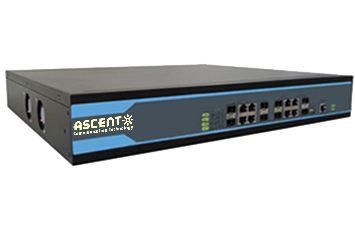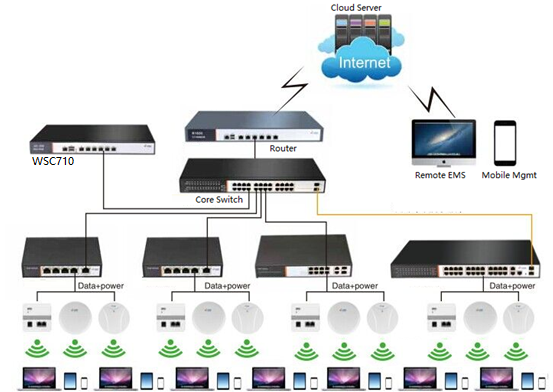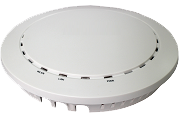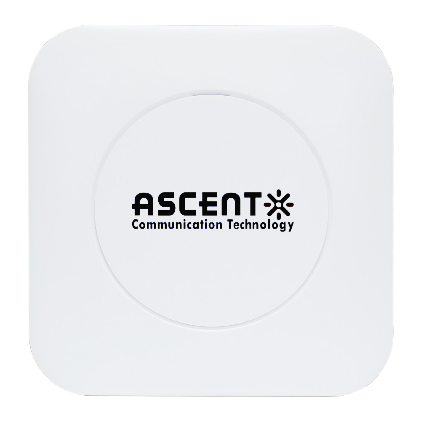- BTS >Wireless AP >WSC710 Wireless AP Controller

WSC710 Wireless AP Controller
Ascentãs WSC710 Series are wireless AC controllers are based on a multi-core general hardware platform. WSC710 series features versatile functions, various services, and high stability. ASCENT WSC710 Series supports CAPWAP standard protocol, strong WLAN access control capabilities, automatic channel management, wireless radio frequency adjustment, user load balance, and user roaming and switching.
ã Supports multiple networking modes including centralized and local forwarding
ã Supports layer-2 and layer-3 roaming functions
ã WEP/WPA/WPA2/802.1x encryption
ã Wireless IPS/IDS, Layer-2 user isolation
ã Centralized ACL control
ã 802.1x/MAC/Portal/PPPoE/WAPI authentication
ã Illegal AP detection and processing
ã Wireless attack prevention
ã Wireless user blacklist/whitelist
ã Packet classification, flow control, DSCP flow schedule, end-to-end QoS mapping, 802.11e, load balance, and reception control
ã Supports Portal 2.0 interface and WiFidog interface
Hardware Specifications
Model | WSC710ã X32B | WSC710ã X64B | WSC710ã X128B | WSC710ã X256B | WSC710ã X512B | WSC710ã X1024B | ||
Interfaces | ||||||||
Standard Interfaces | 1 û CON 1 û USB 2.0 2 û GE Combo 8 û GE BaseãT ports | 1 û CON 1 û USB 2.0 2 û GE Combo 8 û GE BaseãT ports | 1 û CON 1 û USB 2.0 8 û GE Combo | 1 û CON 1 û USB 2.0 8 û GE Combo | 1 û CON 1 û USB 2.0 8 û GE Combo | 1 û CON 1 û USB 2.0 8 û GE Combo | ||
Operation Keys | Reset | Reset | Power onãoff | Power onãoff | Power onãoff | Power onãoff | ||
Basic Performance | ||||||||
AP Access | Builtãin 32 û Lic | Builtãin 64 û Lic | Builtãin 128 û Lic | Builtãin 256 û Lic | Builtãin 512 û Lic | Builtãin 1K û Lic | ||
User Access | Recommend ãÊ1K | Recommend ãÊ2K | Recommend ãÊ4K | Recommend ãÊ8K | Recommend ãÊ16K | Recommend ãÊ30K | ||
Data Throughput | ãË512 Mbps | ãË512 Mbps | ãË2 Gbps | ãË2 Gbps | ãË2 Gbps | ãË2 Gbps | ||
Hardware Parameters | ||||||||
Dimensions (WûDûH) | 300 mm û 200 mm û 44 mm | 443 mm û 208 mm û 66 mm | ||||||
Weight | ãÊ1.8 kg | ãÊ4.5 kg | ||||||
Power Supply | 220 V AC | 220 V AC, dual AC (optional) | ||||||
Average Power Consumption | ãÊ36 W | ãÊ90 W | ||||||
Operating Temperature | 0 ô¯C to 50 ô¯C | |||||||
Operating Humidity | 5% to 95 % RH (nonãcondensing) | |||||||
Software Specifications
Item | WSC710 Series |
IP Functions | Direct IP connection, static route RIP v1/v2 NAT/NPAT DHCP Server/Client/Relay NTP Server FTP Server |
AP/AC Networking | Connecting AP/AC via L3 security tunnel Centralized, distributive and hybrid exchanges of L2 services |
Roaming | InnerãAC or interãAC roaming |
Internetworking | L2 or L3 forwarding between AC and external network STP/802.1Q L2 forwarding RIP/OSPF L3 forwarding |
Forwarding Mode | Centralized forwarding Forwarding all services after being centralized on AC Distributive forwarding Forwarding some AP or SSID services on a thin AP locally |
QoS Control | Userãs flow control: Support the domainãbased flow control (taking VLAN or SSID as the configuration domain). Support userãlevel flow control or flow control based on the contract information of the Radius server. Service priority: Support 802.11e, which provides different services according to sessionãs priority. Support to map usersã QoS levels according to SSID. Support 802.1p and L2 packetãs priority mapping Load balance and control: Support AP/AC interconnection based on priority and load. Support load balance between adjacent APs on the basis of user quantity and flow. |
RF Management | Automatic channel Support static channel configuration. Support automatic channel configuration when AP is powered. Support automatic channel configuration when AP is running. Support to set an automatic channel choice list. Automatic transmitting power Support to set the static transmitting power. Support the automatic transmitting power for coverage remedy. Support the STAãbased automatic transmitting power to improve the throughput. Automatic rate Support the STAãbased automatic rate choice. Support to limit the maximum transmitting rate. |
AAA | RADIUS Client Multiãdomain configuration of the authentication server Connection of active and standby authentication/charging servers Isolation of the authentication server and the charging server |
Authentication and Charging | PPPoE authentication Portal authentication AAA charging |
Network Security | Open system WEP WPA/WPA2 PSK 802.1x 802.11i WAPI DDOS prevention ACL Wireless IPS/IDS Illegal AP detection Illegal terminal checkup Isolation of usersã services White list Static/dynamic blacklist |
Network Management | Local interconnection based on WEB/SSH Remote control via SNMP access Uniform network management via OMC SNMP v2/v3 MIBãII (RFC1213), which is based on TCP/IP Internet management base RFC1537, which is a developing protocol of MIBãII RFC1643 ISO/IEC 8802ã11:1999, IEEE802.11b ISO/IEC 8802ã11:1999/Amd 1:2000 MIB that is defined by IEEE 802.11g and IEEE 802.11i |
AC Redundancy | ãN+1ã backup based on load sharing Load sharing on each AC in normal cases Switching load from troubled AC to another normal AC (The switchover policy can be set) Port redundancy: multiãport binding |
MACãLayer Protocols | 802.1d, 802.1s, 802.1p, 802.1q, 802.1w, 802.3, 802.3ab, 802.3u, 802.3x, 802.3z, ARP, Reverse ARP, multiãLAN ARP/Proxy ARP |
802.11 Protocols | 802.11n, 802.11b, 802.11a, 802.11g, 802.11d, 802.11h, 802.11i, 802.11e |
IPãLayer Protocols | RFC791 IP, RFC792 ICMP, RFC793 TCP, RFC768 UDP, RFC854 Telnet, RFC1542 BOOTP, RFC1191 Path MTU Discovery, RFC1519 Classless InterãDomain Routing (CIDR), RFC1812 IP router requirements, RFC2236 IGMP&IGMPv2 |


WSC610 Wireless AP Controller
WSC610 Intelligent WAC Controllers

WAP510 Wireless AP
WAP510 Ceiling-Mounted Intelligent WAP

WAP310 Wireless AP
WAP310 Ceiling-Mounted Intelligent Wireless Access Point

WAP210 Wireless AP
High-density Ceiling-mounted Wireless AP

WBG210 Wireless AP
WBG210 Gigabit Wireless Mobile Gateway
White Paper
Press Releases
Briefings 1
Briefings 2
Videos, etc.
QRG
Manual1
Manual2
Get in touch with our experts
Feedback